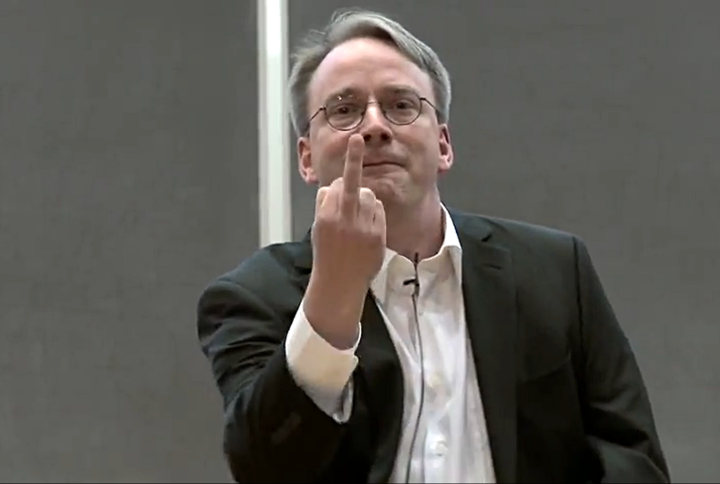hello friends! new(ish)!
Linus Torvalds: Difference between revisions
>Wkn Mako No edit summary |
>Chocolate Chip |
||
| Line 1: | Line 1: | ||
[[File:Linus.jpg|thumb|right|Meet you're Husbando.]] | [[File:Linus.jpg|thumb|right|Meet you're Husbando.]] | ||
'''Linus Torvalds''' is the creator of the [[ | '''Linus Torvalds''' is the creator of the [[Linux]] kernel and the [[Git]] version control system. He is a fine Finnish-American software engineer and is employed by the Linux Foundation as the coordinator of the Linux project. That means he gets paid to tell off a bunch of world-class [[C]] hackers whenever they need it. | ||
== Linux == | == Linux == | ||
Revision as of 08:33, 29 November 2015

Linus Torvalds is the creator of the Linux kernel and the Git version control system. He is a fine Finnish-American software engineer and is employed by the Linux Foundation as the coordinator of the Linux project. That means he gets paid to tell off a bunch of world-class C hackers whenever they need it.
Linux
Unix was awesome, but it was proprietary. GNU aimed to replace it with their own free operating system; they built the entire core system. There was only one problem: they still had to program the kernel. They got stuck. BSD came into existence and was promptly sued into irrelevance. There was a 16-bit open-source Unix-like operating system, called MINIX and created by Andrew S. Tanenbaum, which was intended for academic use and whose modification and redistribution wasn't free.
Linus bought a shiny new 32-bit CPU and MINIX ran like shit on it. So, he started programming a kernel that he could slap x86 wheels on and take off a bunch of sweet jumps. Finding the time for intensive kernel development wasn't too hard since he was a turbo-virgin with nothing better to do. He developed it on MINIX and compiled it with GCC. In 1991, he blogged about it on comp.os.minix. His kernel was originally going to be called Freax, but the much less autistic gentleman hosting the FTP server named the directory Linux instead.
Eventually, the entire code got licensed under the GPL and the GNU core userspace programs were integrated into it. Because Linux is just the kernel and not a full operating system, RMS started having incredible fits of autism over people simply calling it Linux with no reference to the labors of the GNU project. A penguin named Tux was adopted as the mascot of the project. People continued to contribute code.
The rest is history. With time, Linux became pretty much the most portable and stable kernel around, used in desktops, production servers, embedded machines, you name it. Microsoft dismissed it at first, but deep down they knew these dudes were good at that software thing. They tried to discredit using the usual corporate bullshit, but it failed.
Git
In the first 11 years of Linux development, code was passed around using patches and tarballs. Apparently, they got sick of it and adopted a distributed version control system called BitKeeper, which was proprietary software. One day, some kernel hacker wanted to do something with BitKeeper but the program didn't support it. So he hacked. He reverse-engineered the DVCS's protocol and did whatever it was he needed to do. The problem is this was against the license. The company revoked the license of all the kernel hackers for that offense. The very next day, Linus wrote Git. He took CVS and said "let's do the opposite". That meant building a good, fast, scalable, simple, safe distributed version control system.
And he did. He coded BitKeeper as well as pretty much all centralized version control systems into obsolescence. After only a week of work put into it, Git was already tracking its own source code. The Linux kernel source code was migrated to Git, which tracks it to this day.
At some point, Linus stepped down as the maintainer of the project and passed the torch on to somebody else. He probably had his hands full with the kernel. The message had already been passed anyway:
Do Not Fuck With Linus Torvalds!
